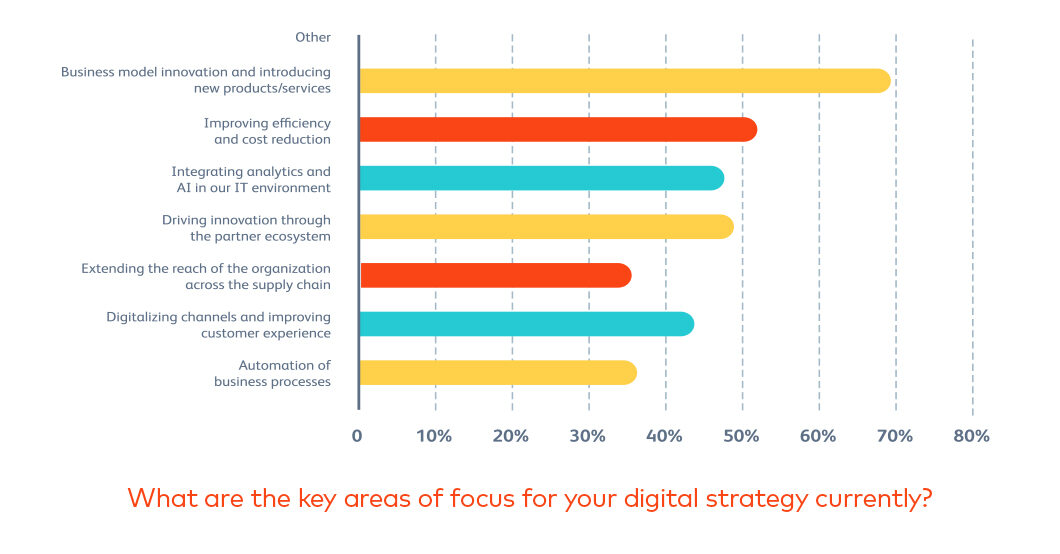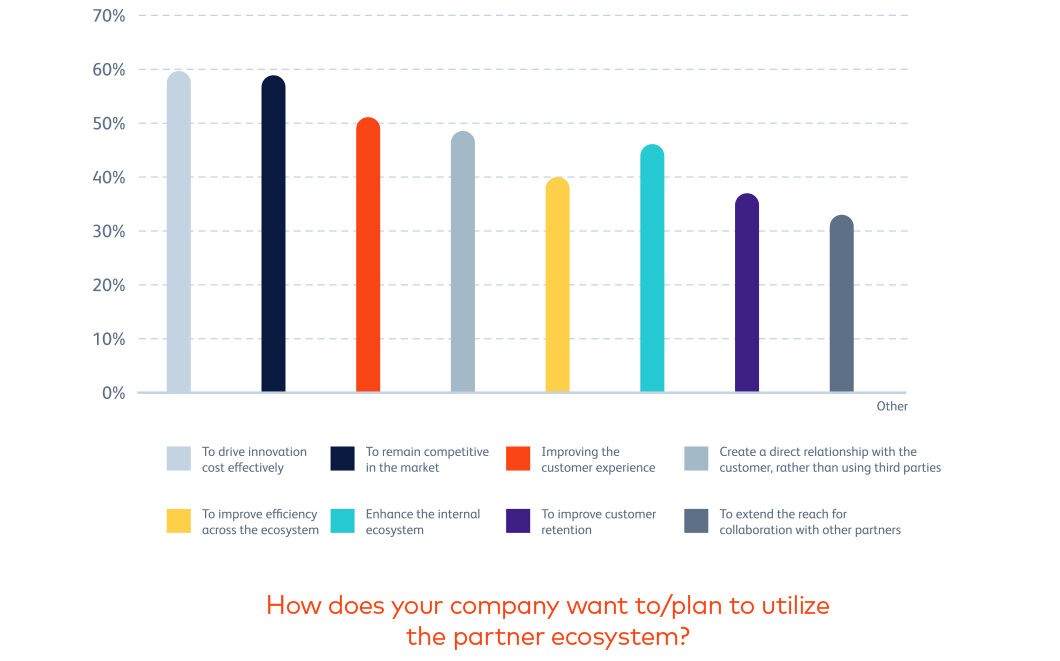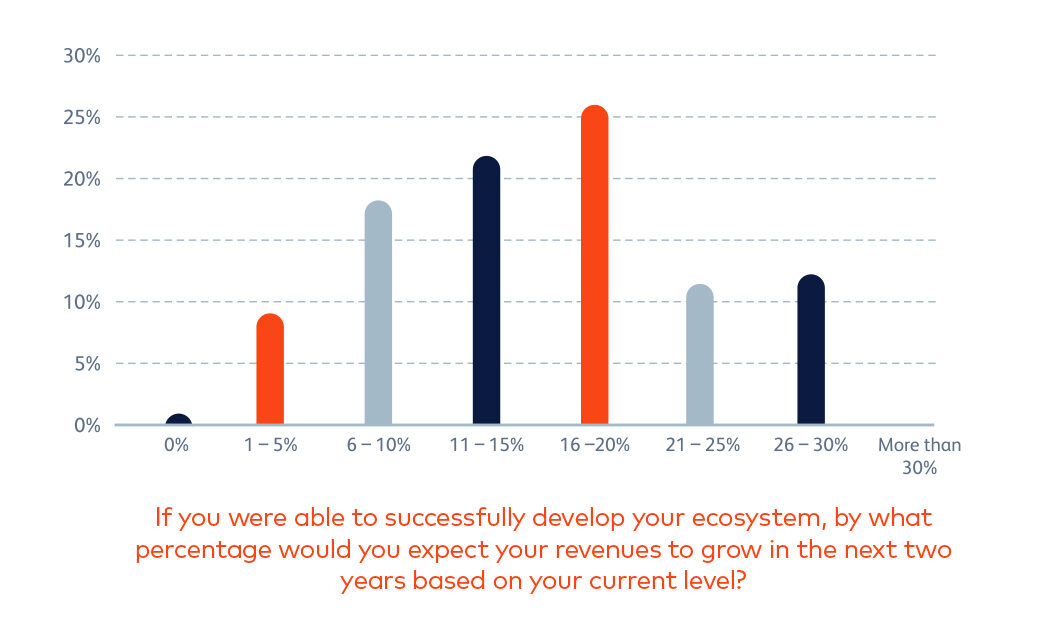
Digital transformation has rapidly become the clarion call for Communications Service Providers (CSPs) around the world. This journey often focuses upon using technology to shore-up short term financial performance by delivering greater efficiency, in preference to the widely held view that, if CSPs don’t look to new digital platform business models, then they will not survive in their current form. And they certainly won’t achieve the ‘S-curve’ growth enjoyed by the OTT players and digital superpowers.
To thrive, CSPs need to innovate to counter commoditization, win new customers and grow topline revenue. Few innovations (improvements or new services alike) are created solely in-house, therefore the right partner ecosystem is paramount. Multi-party innovation is the trend in telecoms. All the more in digital, where flexible service components can be quickly added and combined. Co-innovation of more sophisticated and harder to replicate offers with first mover advantage, to which CSPs add their own service wrapper and user experience, is now the only practicable model.
Despite this, to date very little scale research has been conducted in this area and, consequently, there is limited insight. CSP attitudes towards partner ecosystems are unknown, as is the progress in establishing ecosystems and the challenges in building them.
To begin to shed light on these issues and to support CSPs in establishing and executing their partner ecosystem strategies, Beyond Now commissioned a large-scale primary research study. Conducted by Coleman Parkes, 85 executives representing tier one and tier two CSPs across Europe, Asia and the U.S. were interviewed. 440 senior executives across IT & technology, automotive, transport, banking and insurance sectors were also similarly surveyed, to help rank the progress of CSPs against other industries of a comparable size and scale who are also driving significant digital change.
The results paint a picture of a telecoms industry with high expectations of the impact of ecosystems on their businesses. However, there is an enormous amount of work to do and challenges to overcome before these benefits can be realized.
State of the nation: CSP digital strategies
The good news is that 55% of CSPs have defined their digital strategies and are implementing them. An additional 44% are in the planning phase and only one percent have not considered defining a digital strategy. It’s clear that CSPs are taking the lead in driving digital strategies and the majority have stopped ‘talking the talk’ and started ‘walking the walk’.
One of the key areas of focus for CSP digital strategies is business model innovation and introducing new products and services (69%). Improving efficiency is also important for 52%, followed by driving innovation through partner ecosystems (49%). Interestingly, issues such as automation of business processes and improving customer experience came further down the list.

Ecosystem attitudes and expectations: the silver bullet?
There are two main types of ecosystem available to CSPs. One type is internal, designed to bridge organizational silos. The second is external – either with partners (providers of complimentary capabilities, products and services or channel partners) or customers. Focusing on partner ecosystems – which can have a more transformational impact on a CSP – the telecoms industry has high expectations on perceived benefits.

60% of CSPs expect partner ecosystems to drive cost-effective innovation, 59% to help them remain competitive, 51% to improve customer experience, 48% to create direct relationships with customers, 45% to enhance the internal ecosystem and 40% to improve efficiency. It seems as though partner ecosystems are turning into the ‘silver bullet’ for a great many of the business challenges that CSPs face today.
“An ecosystem is an open, multi-sided collaboration between different parties. These parties can include: the internal units of an organization, current and future business partners, and customers. An effective ecosystem will enable an exchange of ideas/products/services or information in an iterative way and will include operative processes and tools to share the benefits between the parties. Such an ecosystem can help generate new ideas, drive innovation, expand offerings, increase reach and grow revenue.”

This suggestion is validated when CSPs are asked about the percentage revenue uplift they expect to see in the next two years if they were able to successfully develop their ecosystem. 9% expect a modest 1-5% revenue boost, 18% 6-10%, and 22% anticipate an 11-15% increase in revenues. However, a startling 50% of CSPs expect their revenues to grow by more than 16% in the next two years based on a successfully developed ecosystem. Of that, 12% anticipate growth of more than 25%. The stakes are incredibly high.
When it comes to the sectors that CSPs currently partner with, there are few surprises. 67% work with other telecommunications companies, 62% with IT and technology companies and 54% with utility companies.
But there is significant change on the cards. When asked which sectors CSPs expect to be partnering with in the next two years, manufacturing rises to 42% (from 17% today), insurance increases to 42% (from 25%) and automotive climbs to 33% (from 12%). There is a clear switch around with CSPs seeing a declining need for partnership with telecommunications (67% falling to 25% in two years), utility (54% to 29%) and transport (25% to 12%) sectors in the next two years.
If CSPs are unified on the ‘what’ – that partner ecosystems are the answer to many problems, including significant revenue growth and service diversification – there is much less certainty on the ‘how’.
Ecosystem progress report: a tale of inconsistency and catching up
The researchers put forward five potential partner ecosystem models. They asked each CSP executive “Which of the following types of partner ecosystem is most similar to the ecosystem you currently have in place/plan to introduce in the future?” and matched their answers to each of the five models.
36% of answers most closely matched ‘model one’ – using a partner ecosystem to drive business growth, innovation and new revenues. 29% most closely matched ‘model two’ – using a partner ecosystem to increase revenues by selling new services to existing customers. 21% most closely matched ‘model three’ – using a partner ecosystem to increase retention and loyalty. 8% are focused on a model that increases efficiency and profitability internally, and finally, 5% on improving efficiency in the use of channel partners.